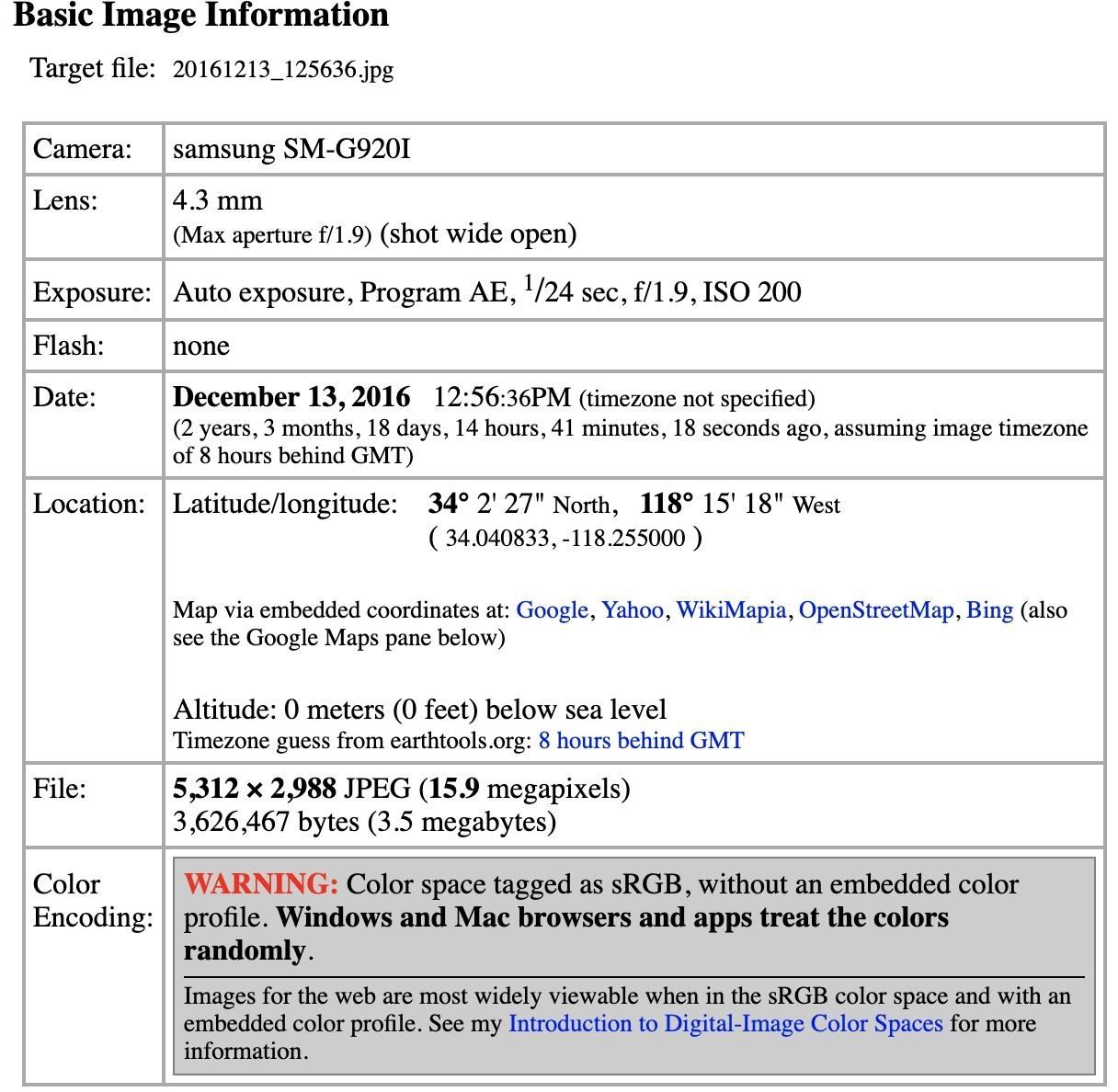

- #Exif geotag viewer for mac osx how to
- #Exif geotag viewer for mac osx for mac os x
- #Exif geotag viewer for mac osx install
There is also an iPhoto plugin or a standalone program for uploading photos available for Mac OS X 10.4 and later.Ĭurrently, the latest major version of Picasa is 3.9, which supports Windows XP, Windows Vista and Windows 7, and has Google+ integration for users of that service.

For Linux, Google has bundled Wine with the Windows version to create an installation package rather than write a native Linux version, but this version is severely out of date (the latest Windows version, however, can be run with Wine see the Linux section). Native applications for Windows XP, Windows Vista, Windows 7 and Mac OS X (Intel only) are available through Google Labs. In July 2004, Google acquired Picasa from its original author and began offering it as freeware. "Picasa" is a blend of the name of Spanish painter Pablo Picasso, the phrase mi casa (Spanish for "my house") and "pic" for pictures (personalized art). Picasa is an image organizer and image viewer for organizing and editing digital photos, plus an integrated photo-sharing website, originally created by a company named Lifescape (which at that time may have resided at Idealab) in 2002 and owned by Google since 2004. Firing up a python web server we get our final result.×3.9.0 (Build 136.20) (April 2, 2013 2 months ago ()) I could even consider dynamically generating this JavaScript from Python if I had many images I'm working with. To get a full list of the tags the Exiv2 Metadata reference table is pretty handy. The tags also show a variety of other details like the camera used, image dimensions, settings, etc. The label GPSInfo is much more meaningful than 34853 which is the numeric code defined in the standard for identifying the GPS data in Exif. Fortunately, the library also makes it easy to identify these attributes with human readable labels. It isn’t terribly useful unless you know what you are looking for. What you get back from this get_exif() function is a dictionary with numeric keys that correspond to various types of data. With just a few lines of code we can display the Exif data: #!/usr/bin/env python
#Exif geotag viewer for mac osx install
The installation is straightforward with pip install Pillow. As a more general purpose image library, I find Pillow to be helpful and is an update for some of the code samples you may see from Python 2.x examples referencing PIL. There are several options you can use for reading Exif data such as piexif and exifread that you might like to try.

I use virtualenv and virtualenv_wrapper to keep my project dependencies straight and recommend you do as well if you run into any issues installing libraries. I’ll be working with Python 3.7 in the examples since it’s almost 2020 and Python 2.7 won't be supported for much longer.
#Exif geotag viewer for mac osx how to
This project will demonstrate how to extract Exif data from a JPEG, how to convert from Degrees Minutes Seconds (DMS) to decimal coordinates, how to group photos by location, and finally how to place a thumbnail image on a map like this. We’re going to get started with how to read geotagged photographs using Python to make use of the data. With the proliferation of digital cameras and smart phones with GPS receivers these images often include geolocation coordinates. The Exchangeable image file format (Exif) is a standard that’s been around since 1998 to include metadata in image file formats like JPEG, WAV, HEIC, and WEBP.


 0 kommentar(er)
0 kommentar(er)
